
Leopold Zakharovich Trepper was a Polish-Israeli Communist and career Soviet agent of the Red Army Intelligence. With the code name Otto, Trepper had worked with the Red Army since 1930. He was also a resistance fighter and journalist.

The Red Orchestra was the name given by the Abwehr Section III.F to anti-Nazi resistance workers in Germany in August 1941. It primarily referred to a loose network of resistance groups, connected through personal contacts, uniting hundreds of opponents of the Nazi regime. These included groups of friends who held discussions that were centred on Harro Schulze-Boysen, Adam Kuckhoff and Arvid Harnack in Berlin, alongside many others. They printed and distributed prohibited leaflets, posters, and stickers, hoping to incite civil disobedience. They aided Jews and resistance to escape the regime, documented the atrocities of the Nazis, and transmitted military intelligence to the Allies. Contrary to history, modern anti-communist nationalists prefer to believe that the Red Orchestra was neither directed by Soviet communists nor under a single leadership. It was a network of groups and individuals, often operating independently. To date, about 400 members are known by name.
The Lucy spy ring was an anti-Nazi World War II espionage operation headquartered in Switzerland and run by Rudolf Roessler, a German refugee. Its story was only published in 1966, and very little is clear about the ring, Roessler, or the effort's sources or motives.

Rudolf Roessler was a Protestant German and a dedicated anti-Nazi. During the interwar period, Roessler was a lively cultural journalist, with a focus on theatre. In 1934, Roessler became stateless by Germany and as a political refugee, moved to Lucerne in Switzerland. There he established a small anti-Nazi publishing firm in Lucerne known as Vita Nova that published Exilliteratur by fellow exiled writers. Late in the summer of 1942, Roessler ran the Lucy spy ring, an anti-Nazi espionage operation that was part of the Red Three while working for Rachel Dübendorfer through the cut-out Christian Schneider (editor). Roessler was able to provide a great quantity of high-quality intelligence, around 12,000 typed pages, sourced from the German High Command of planned operations on the Eastern Front, usually within a day of operational decisions being made. Later in the war, Roessler was able to provide the Soviet Union with intelligence on the V-1 and V-2 missiles. During the Cold War, Roessler reactivated his network and he spied on NATO countries in Western Europe under orders from the military intelligence services of the Czechoslovak Republic, until he was arrested by the Swiss authorities and convicted of espionage in 1953.
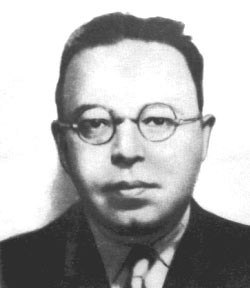
Alexander Radó, also: Alex, Alexander Radolfi, Sándor Kálmán Reich or Alexander Rado, was a Hungarian cartographer who later became a Soviet military intelligence-agent in World War II. Radó was also a member of the resistance to Nazi Germany, devoted to the service of the so-called Red Orchestra, the Soviet espionage and spy network in Western Europe between 1933 and 1945. Within the Red Orchestra, he headed the Switzerland-based Red Three group, one of the most efficient components of the Soviet intelligence network.
Leon Charles Beurton was an English Communist who worked as an agent for the Soviet intelligence services.

Henry Robinson, sometimes known as Henri Robinson, was a Belgian Communist and later intelligence agent of the Communist International (Comintern). Robinson was a leading member of the Red Orchestra, a Soviet espionage group based in Paris. Robinson used a number of code names and aliases.
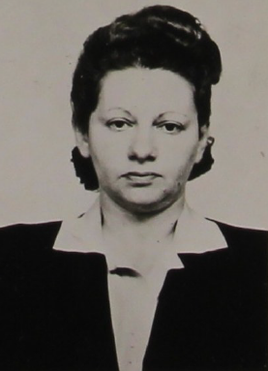
Rachel Dübendorfer was an anti-Nazi resistance fighter. During the Second World War, her codename was Sissy, and she was in a section of the Red Three Swiss resistance movement.

Anatoly Markovich Gurevich was a Soviet intelligence officer. He was an officer in the GRU operating as "разведчик-нелегал" in Soviet intelligence parlance. Gurevich was a central figure in the anti-Nazi Red Orchestra in France and Belgium during World War II.

Johann Wenzel was a German Communist, highly professional GRU agent and radio operator of the espionage group that was later called the Red Orchestra by the Abwehr in Belgium and the Netherlands. His aliases were Professor, Charles, Bergmann, Hans, and Hermann. Wenzel was most notable as the person who exposed the Red Orchestra after his transmissions were discovered by the Funkabwehr, later leading to his capture by the Gestapo on 29–30 June 1942.
Sonderkommando Rote Kapelle was a German special commission that was created by German High Command in November 1942, in response to the capture of two leading members of a Soviet espionage group that operated in Europe, that was called the Red Orchestra by the Abwehr. The Sonderkommando Rote Kapelle was an internal counter-intelligence operation run by the Abwehr and the Gestapo. It consisted of a small independent Gestapo unit that was commanded by SS-Obersturmbannführer Friedrich Panzinger and its chief investigator was Gestapo officer Karl Giering. Its remit was to discover and arrest members of the Red Orchestra in Germany, Belgium, France, Netherlands, Switzerland and Italy during World War II.
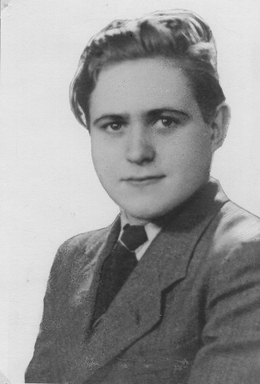
Leon Grossvogel was a Polish-French Jewish businessman, Comintern official, resistance fighter, communist agitator and one of the organizers of a Soviet intelligence network in Belgium and France, that was later called the Red Orchestra by the Abwehr. Grossvogel used the following code names to disguise his identity: Pieper, Grosser, and Andre. In the autumn of 1938, Grossvogel became associated with Leopold Trepper, a Soviet intelligence agent who would later run a large espionage network in Europe. Grossvogel established two cover companies, the Foreign Excellent Raincoat Company and later Simexco that would be used by Trepper as a cover and funding for his espionage network. Grossvogel who organised funding for the companies, would later become an assistant to Trepper, organising safehouses, couriers, cutouts and agents.
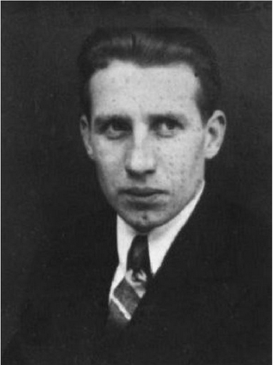
Mikhail Varfolomeevich Makarov was a Russian national and career Soviet GRU officer with rank of lieutenant, who was one of the organizers of a Soviet intelligence network in Belgium and Netherlands, that was later called the Red Orchestra by the Abwehr. His aliases were Alamo, Carlos Alamo and Chemnitz. In March 1939, Makarov became associated with Leopold Trepper, a Soviet intelligence agent who would later run a large espionage network in Europe. Makarov was captured on the 13 December 1941 by the Abwehr and later executed in Plötzensee Prison in 1942.
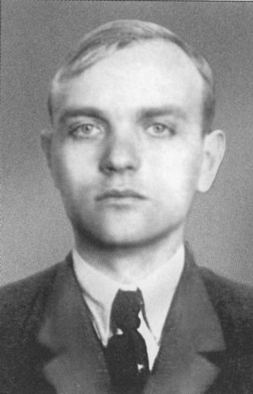
Konstantin Lukitsch Jeffremov, also known as Konstantin Yeffremov, was a Soviet GRU intelligence officer, known as a scout in Soviet intelligence parlance, with the rank of captain. Jeffremov was an expert in chemical warfare. Jeffremov used the aliases Pascal and Eric Jernstroem to disguise his identity in messages He had been working for Soviet intelligence since 1936. and the alias Bordo. Jeffremov has been labeled an anti-Semite, as he expressed resentment towards being subordinate to the Jews who dominated the GRU. He was the organizer of a Soviet espionage network in the Netherlands and the Low Countries In 1942, Jeffremov took over the running of a number of networks in Belgium and the Netherlands, that had been damaged in the months prior, after several members were arrested by the Abwehr. These networks was later given the moniker, the Red Orchestra by the Abwehr. Jeffremov was arrested in July 1942 and agreed to work for the Abwehr in a Funkspiel operation, after being tortured.
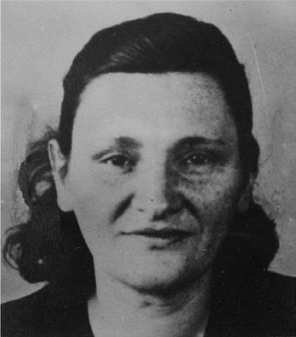
Malvina Gruber, née Hofstadterova was a Jewish Comintern agent, who was part of a Soviet intelligence network in Belgium and France, that was later called the Red Orchestra by the Abwehr, during Nazi regime. Gruber worked as a cutout, but her specialism was couriering people across borders. From 1938 to 1942, Gruber worked as assistant to Soviet agent Abraham Rajchmann, a forger, who provided identity papers, e.g. the Kennkarte, Carte d'identité and travel permits, for the espionage group. At the beginning of 1942, she was arrested in Brussels by the Abwehr.
Basile Maximovitch was a Russian aristocrat and civil mining engineer. He became a Soviet agent by choice and subsequently became an important member of the Red Orchestra organisation in France during World War II. Maximovitch was the son of a Cavalry officer Baron Maximovitch, who held the rank of General, on the staff of Imperial Russian Army.
Isidore Springer was a Belgian diamond dealer and communist who became an important member of the Red Orchestra organisation in Belgium and later France during World War II. Springer worked as a recruiter and courier between Leopold Trepper, a Soviet agent who was the technical director of Soviet espionage in Western Europe, and Anatoly Gurevich, also a Soviet agent, in Belgium. He would later run the 6th network of Trepper's seven espionage networks in France, providing intelligence from US and Belgian diplomats. His aliases were Romeo, Verlaine, Walter van Vliet, Fred and Sabor.
Alfred Valentin Corbin was a French communist sympathiser, editor and reviewer, commercial director, and resistance fighter. Before the war, Corbin ran a poultry feed business with his brother. After serving in the French Foreign Legion in the lead up to the war, Corbin was recruited by Soviet intelligence to run a black market trading company. In 1941, Corbin worked as a director of the Paris-based, Simex black market trading company, that was in reality a cover for a Soviet espionage organisation, later known as the Red Orchestra.
Margrit Bolli was a Swiss dancer, better known to students of espionage during the Second World War as a radio operator for the "Red Three", the Swiss branch of the so-called "Red Orchestra". "Red Orchestra" was the umbrella term used by the German security services to identify a widely dispersed network of anti-(German) government resistance activists. The German authorities, and many commentators following their lead, operated according to the simplifying assumption that the entire "Red Orchestra" was a coherent network directed by Soviet intelligence. The reality was a little more nuanced, but many of the most effective resistance activists were indeed committed communists, and many did maintain close links to Moscow. For this, the work of politically engaged radio operators such as Margrit Bolli was vital.
The Great Illegals were a group of Soviet Comintern espionage agents whom MI5 counterintelligence agent Peter Wright grouped together due to their masterful espionage activities against the west. Often, they were generally foreigners but held Russian citizenship and were ideologically driven. They were trotskyist communists who believed in international communism and the comintern. Wright considered them the best recruiters and controllers that Soviet intelligence ever produced. They knew each other, and together they recruited and built a number of high-grade espionage networks in hostile foreign countries, across the world. Examples of these were, Arnold Deutsch who recruited Kim Philby of the Cambridge Five in Britain the Red Three in Switzerland run by Alexander Radó or Leopold Trepper's network the Red Orchestra in German-occupied Europe, and Richard Sorge's espionage network in China and Japan.












